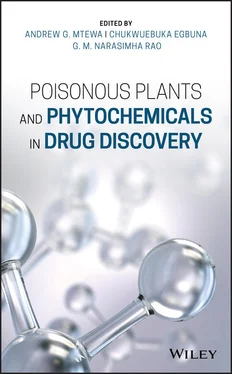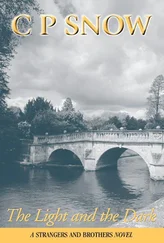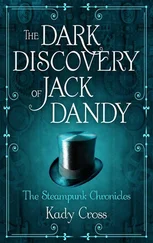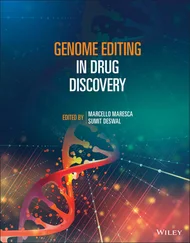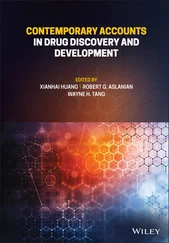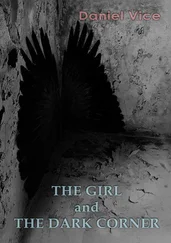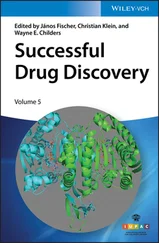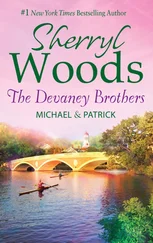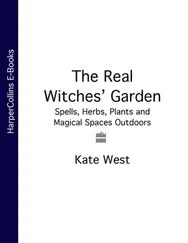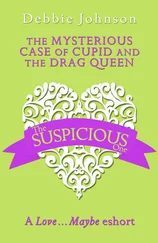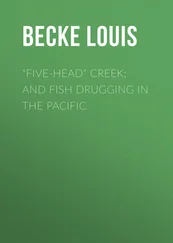5 5 Nelson, L.S., Shih, R.D., Balick, M.J., and Lampe, K.F. (2007). Handbook of Poisonous and Injurious Plants. Springer.
6 6 Kellerman, T.S. (2009). Poisonous plants. The Onderstepoort Journal of Veterinary Research 76 (1): 19–23.
7 7 Kumar, V.L. and Basu, N. (1994). Anti‐inflammatory activity of the latex of Calotropis procera. Journal of Ethnopharmacology 44: 123–125.
8 8 Quattrocchi, U. (2017). CRC World Dictionary of Plant Names: Common Names, Scientific Names, Eponyms, Synonyms, and Etymology. Routledge.
9 9 Philippe, G. and Angenot, L. (2005). Recent developments in the field of arrow and dart poisons. Journal of Ethnopharmacology 100 (1–2): 85–91. https://doi.org/10.1016/j.jep.2005.05.022.
10 10 Man, S., Gao, W., Wei, C., and Liu, C. (2012). Anticancer drugs from traditional toxic Chinese medicines. Phytotherapy Research 26 (10): 1449–1465. https://doi.org/10.1002/ptr.4609.
11 11 Rajendra, S., Lynch, J.W., and Schofield, P.R. (1997). The glycine receptor. Pharmacology and Therapeutics 73: 121–146.
12 12 Dmitrieva, R.I. and Doris, P.A. (2002). Cardiotonic steroids, potential endogenous sodium pump ligands with diverse function. Experimental Biology and Medicine 227: 561–569.
13 13 Dmitrieva, R.I. and Doris, P.A. (2003). Ouabain is a potent promoter of growth and activator of ERK1/2 in ouabain‐resistant rat renal epithelial cells. Journal of Biological Chemistry 278: 28160–28166.
14 14 Rates, S.M.K., Betti, A.H., Müller, L.G., and Nunes, J.d.M. (2015). Plant toxins as sources of drugs. In: Plant Toxins (eds. P. Gopalakrishnakone, C.R. Carlini and R. Ligabue‐Braun), 1–21. Dordrecht: Springer Netherlands.
15 15 Somani, S.M. and Dube, S.N. (1989). Physostigmine – an overview as pretreatment drug for organophosphate intoxication. International Journal of Clinical Pharmacology, Therapy, and Toxicology 27 (8): 367–387.
16 16 Raghavendra, T. (2002). Neuromuscular blocking drugs: discovery and development. Journal of the Royal Society of Medicine 95 (7): 363–367. https://doi.org/10.1258/jrsm.95.7.363.
17 17 Frankenburg, F.R. (1994). History of the development of antipsychotic medication. Psychiatric Clinics of North America 17 (3): 531–540. https://doi.org/10.1016/S0193‐953X(18)30098‐4.
18 18 Shamon, S.D. and Perez, M.I. (2016). Blood pressure‐lowering efficacy of reserpine for primary hypertension. The Cochrane Database of Systematic Reviews 12 (12): CD007655. https://doi.org/10.1002/14651858.CD007655.pub3.
19 19 Taylor, W.I. (1965). The Ajmaline‐Sarpagine alkaloids. In: The Alkaloids: Chemistry and Physiology, vol. 8, 785–814. Elsevier.
20 20 Oberlies, N.H. and Kroll, D.J. (2004). Camptothecin and taxol: historic achievements in natural products research. Journal of Natural Products 67 (2): 129–135. https://doi.org/10.1021/np030498t.
21 21 Trease, E.C.W. and Evans, D. (2009). Pharmacognosy, 16e. London: Elsevier Ltd.
22 22 Cerquaglia, C., Diaco, M., Nucera, G. et al. (2005). Pharmacological and clinical basis of treatment of familial Mediterranean fever (FMF) with colchicine or analogues: an update. Current Drug Targets. Inflammation and Allergy 4 (1): 117–124.
23 23 Pirmohamed, M. (2006). Warfarin: almost 60 years old and still causing problems. British Journal of Clinical Pharmacology 62 (5): 509–511. https://doi.org/10.1111/j.1365‐2125.2006.02806.x.
24 24 Gordaliza, M., Castro, M.A., Corral, J.M.M.d., and Feliciano, A.S. (2000). Antitumor properties of podophyllotoxin and related compounds. Current Pharmaceutical Design 6 (18): 1811–1839. http://dx.doi.org/10.2174/1381612003398582.
25 25 Ma, L., Gu, R., Tang, L. et al. (2015). Important poisonous plants in Tibetan ethnomedicine. Toxins 7 (1): 138–155. https://doi.org/10.3390/toxins7010138.
26 26 Panter, K.E., Welch, K.D., Gardner, D.R., and Green, B.T. (2013). Poisonous plants: effects on embryo and fetal development. Birth Defects Research Part C: Embryo Today: Reviews 99 (4): 223–234. https://doi.org/10.1002/bdrc.21053.
27 27 Tamokou, J.‐d.‐D. and Kuete, V. (2014). Toxic plants used in African traditional medicine. In: Toxicological Survey of African Medicinal Plants (ed. V. Kuete), 135–180. Elsevier.
28 28 Daugherty, C.G. (1995). The death of Socrates and the toxicology of hemlock. Journal of Medical Biography 3 (3): 178–182. https://doi.org/10.1177/096777209500300310.
29 29 Dayan, A.D. (2009). What killed Socrates? Toxicological considerations and questions. Postgraduate Medical Journal 85 (999): 34–37. https://doi.org/10.1136/pgmj.2008.074922.
30 30 Hotti, H. and Rischer, H. (2017). The killer of Socrates: coniine and related alkaloids in the plant kingdom. Molecules 22 (11) https://doi.org/10.3390/molecules22111962.
31 31 Iwu, M.M. (1993). Handbook of African Medicinal Plants. Boca Raton, USA: CRC Press LLC.
32 32 Davidson, A. (1873). An account of the Madagascar ordeal poison. Journal of Anatomy and Physiology 8 (Pt 1): 97–112.
33 33 Robb, G.L. (1957). The ordeal poisons of Madagascar and Africa. Botanical Museum Leaflets, Harvard University 17 (10): 265–316.
34 34 Dai, H.F., Gan, Y.J., Que, D.M. et al. (2009). A new cytotoxic 19‐nor‐cardenolide from the latex of Antiaris toxicaria. Molecules 14 (9): 3694–3699. https://doi.org/10.3390/molecules14093694.
35 35 Frédérich, M., Jacquier, M.J., Thépenier, P. et al. (2002). Antiplasmodial activity of alkaloids from various Strychnos species. Journal of Natural Products 65: 1381–1386.
36 36 Frédérich, M., De Pauw, M.‐C., Prosperi, C. et al. (2001). Strychnogucines A and B, two new antiplasmodial bisindole alkaloids from Strychnos icaja. Journal of Natural Products 64: 12–16.
37 37 Tulp, M. and Bohlin, L. (2004). Unconventional natural sources for future drug discovery. Drug Discovery Today 9: 450–458.
38 38 Cannon, J.G., Burton, R.A., Wood, S.G., and Owen, N.L. (2004). Naturally occurring fish poisons from plants. Journal of Chemical Education 81 (10): 1457. https://doi.org/10.1021/ed081p1457.
39 39 Neuwinger, H.D. (1994). Fish poisoning plants in Africa. Botanica Acta 107 (4): 263–270. https://doi.org/10.1111/j.1438‐8677.1994.tb00795.x.
40 40 Neuwinger, H.D. (2004). Plants used for poison fishing in tropical Africa. Toxicon 44 (4): 417–430. https://doi.org/10.1016/j.toxicon.2004.05.014.
41 41 Naude, T.W., Kellerman, T.S., and Coetzer, J.A.W. (1996). Plant poisonings and mycotoxicoses as constraints in livestock production in East Africa: the southern African experience. Journal of the South African Veterinary Association 67 (1): 8–11.
42 42 Ito, H., Muranaka, T., Mori, K. et al. (2000). Ichthyotoxic phloroglucinol derivatives from Dryopteris fragrans and their anti‐tumor promoting activity. Chemical and Pharmaceutical Bulletin 48 (8): 1190–1195.
43 43 Takashima, J., Chiba, N., Yoneda, K., and Ohsaki, A. (2002). Derrisin, a new Rotenoid from Derris malaccensis plain and anti‐Helicobacter pylori activity of its related constituents. Journal of Natural Products 65 (4): 611–613.
44 44 Whiting, M.G. (1963). Toxicity of cycads. Economic Botany 17 (4): 270–302.
45 45 Lye, K.A., Bukenya‐Ziraba, R., Tabuti, J.R.S., and Waako, P.J. (2008). Plant‐Medicinal Dictionary for East Africa. Kampala: Department of Botany, Makerere University.
46 46 Soares, P.M., Lima, S.R., Matos, S.G. et al. (2005). Antinociceptive activity of Calotropis procera latex in mice. Journal of Ethnopharmacology 99: 125–129.
47 47 Tamilselvan, N., Thirumalai, T., Shyamala, P., and David, E. (2014). A review on some poisonous plants and their medicinal values. Journal of Acute Disease 3 (2): 85–89. https://doi.org/10.1016/S2221‐6189(14)60022‐6.
48 48 Rivadeneyra‐Domínguez, E. and Rodríguez‐Landa, J.F. (2014). Cycads and their association with certain neurodegenerative diseases. Neurología (English Edition) 29 (9): 517–522. https://doi.org/10.1016/j.nrleng.2013.03.005.
Читать дальше
